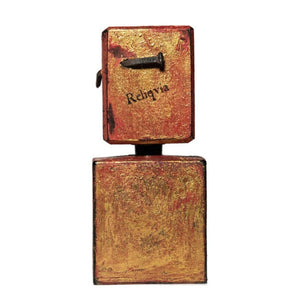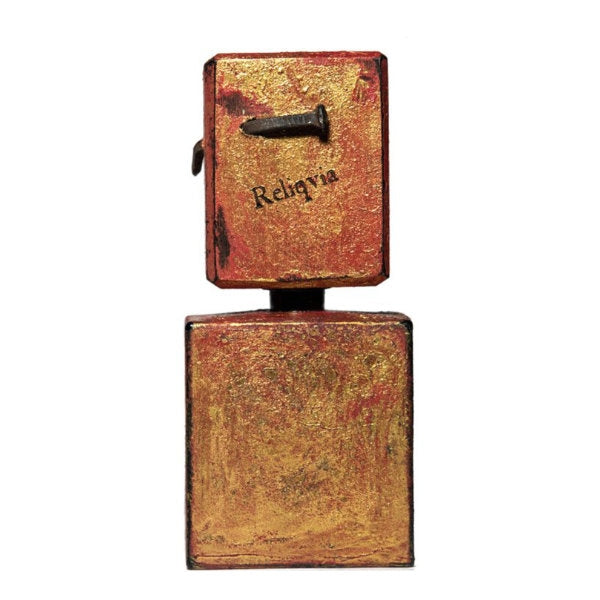I leave behind what remains
‘Reliqvia’ is derived from the Latin verb “relinquo,” which means “I leave behind.” The Latin term “reliquiae” and the Greek term “λείψανα” are generally understood to mean “that which remains” and refer to the human body or a part of it. In the Christian context, this word refers to a body part or object that belonged to Christ, the Blessed Virgin or the mortal remains of those recognised as martyrs and saints, and more generally to other objects that have come into contact with their bodies.
The fragrance by Filippo Sorcinelli, which follows the tribute to Mario Giacomelli with ‘Io non ho mani che mi accarezzino il volto’ (I have no hands to caress my face), returns to Senigallia to describe a place that is simply extraordinary, rich in history and works of art, a great repository of important relics of the Passion of Christ: the Chiesa della Croce, considered one of the jewels of Italian Baroque. This church, dating back to 1608, was built by the Confraternita del Sacramento e della Croce, which is still active today and to which Filippo belongs in a special position as organist and artistic director.
Reliqvia talks about the walls covered with gilded wood, finely decorated with carvings and reliefs, and the sublime steps leading up to the high altar, which resembles golden embroidery and houses the statue of the dead Christ, a 17th-century woodwork that can only be seen once a year. But he also wants to associate Federico Barocci's altarpiece, ‘The Transfer of Christ to the Tomb’, one of the most beautiful works by the Urbino painter from 1582, for which he also designed the frame, in a synaesthetic way.
Reliqvia is therefore a place where people meet and evoke memories to recall the passing of time, which becomes ‘solemn and genuine gold’, a message of transience and immortality. Reliqvia is the tangible trace, the last trace, to describe another wonderful existence above us in life. It is the ever-closed cabinet, the precious repository of holy people, which makes us understand that time is precious and that it is in danger of being wasted without us leaving a clear trace in life. Reliqvia is the nail of the Passion, multi-layered and peaty incense from solemn and holy years. There is no sacred if people do not recognise the sacred and glorify it in perfect rites.
Reliqvia is the perfect sacred space. Touching the relics, touching something that has come into contact with them, is a blessing and a guarantee: for this reason, the Romans tore the veils that had covered the holy martyrs and in which the bodies of the popes were wrapped. This is why the popes were wrapped in these very veils. Before the relics, fools are healed, the possessed and the haunted are freed, the blind regain their sight, the lame begin to walk again...




